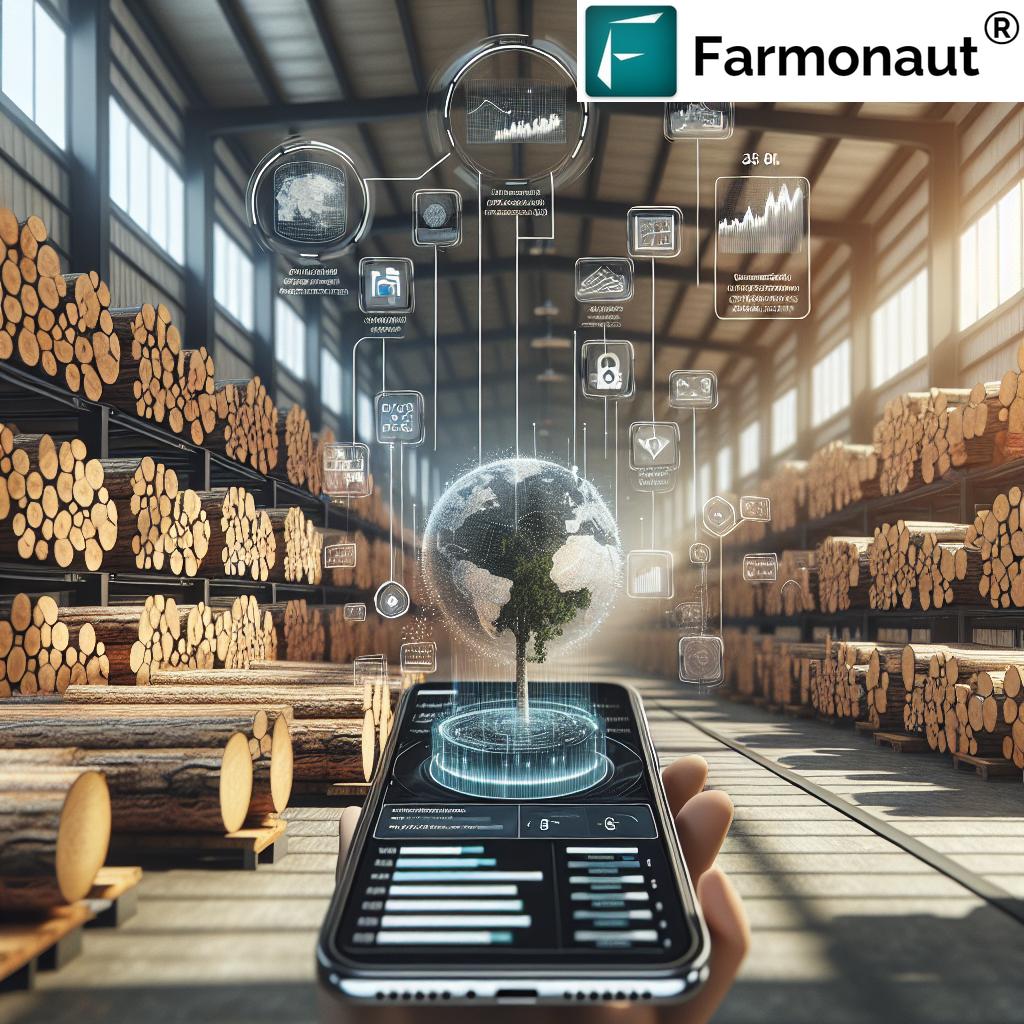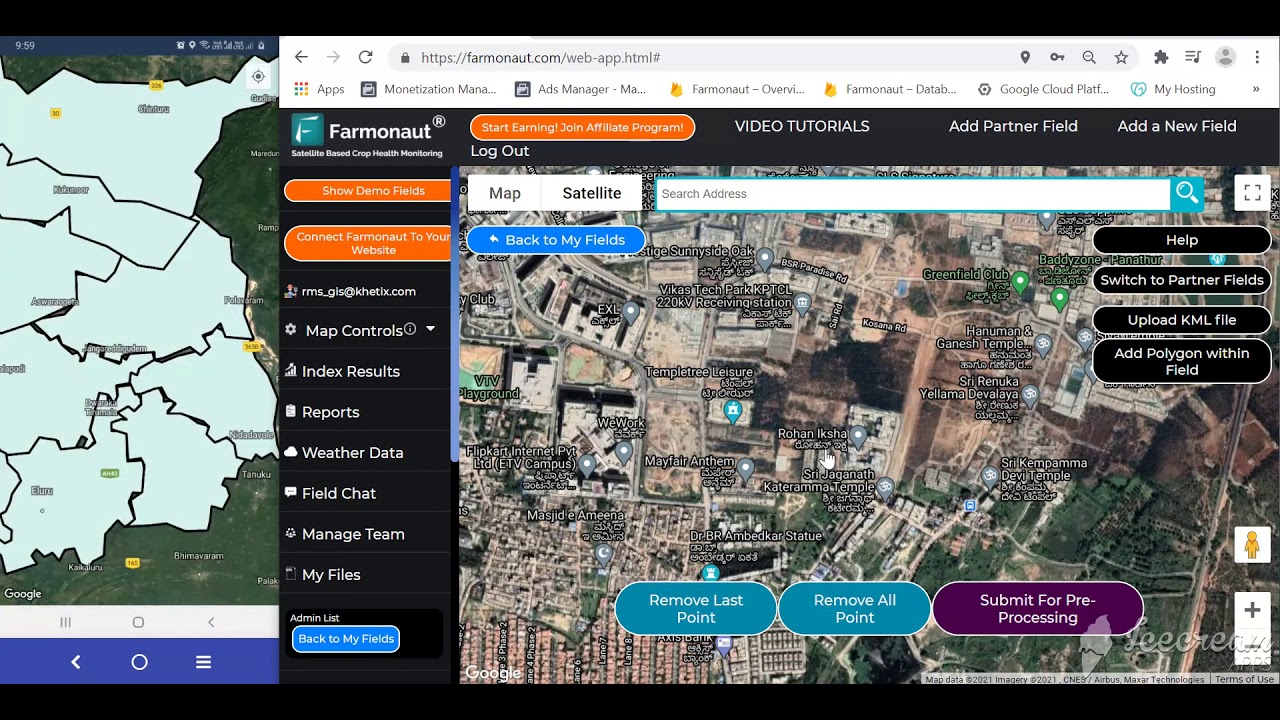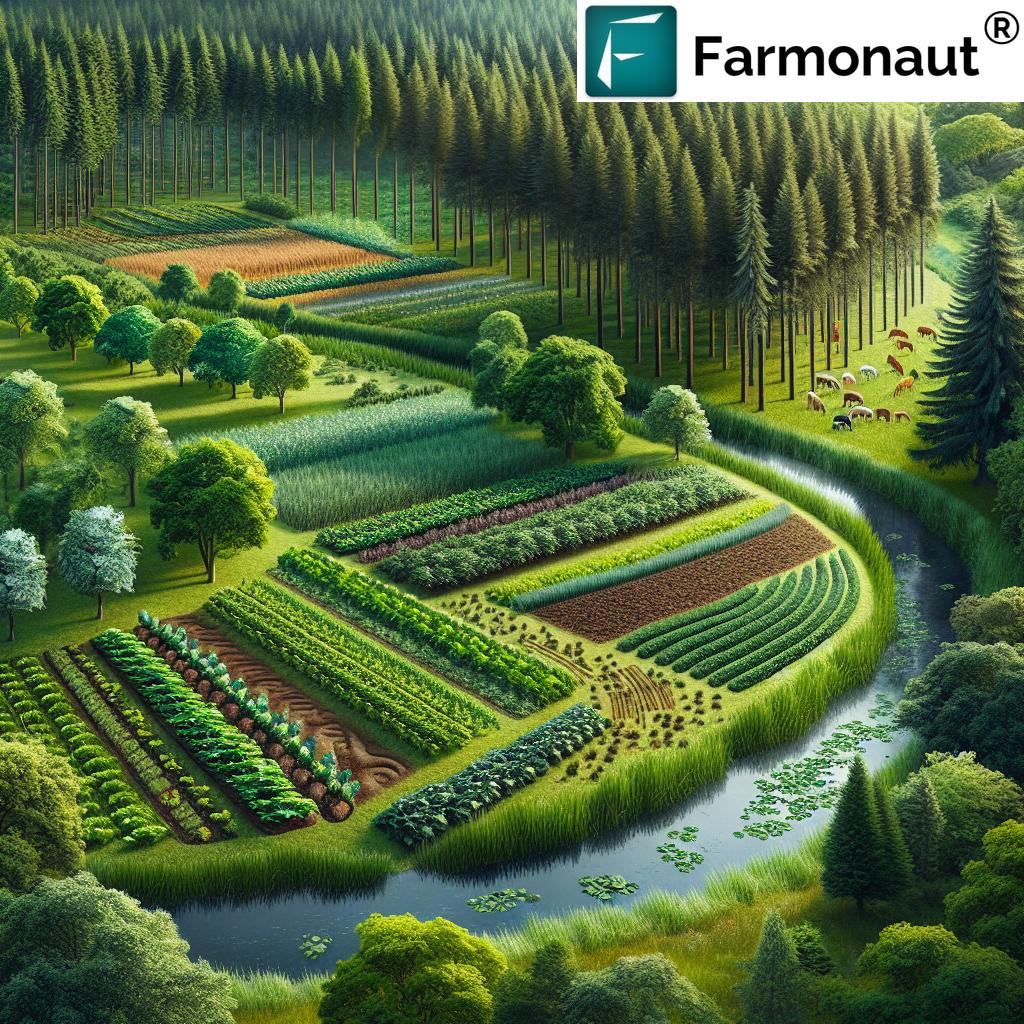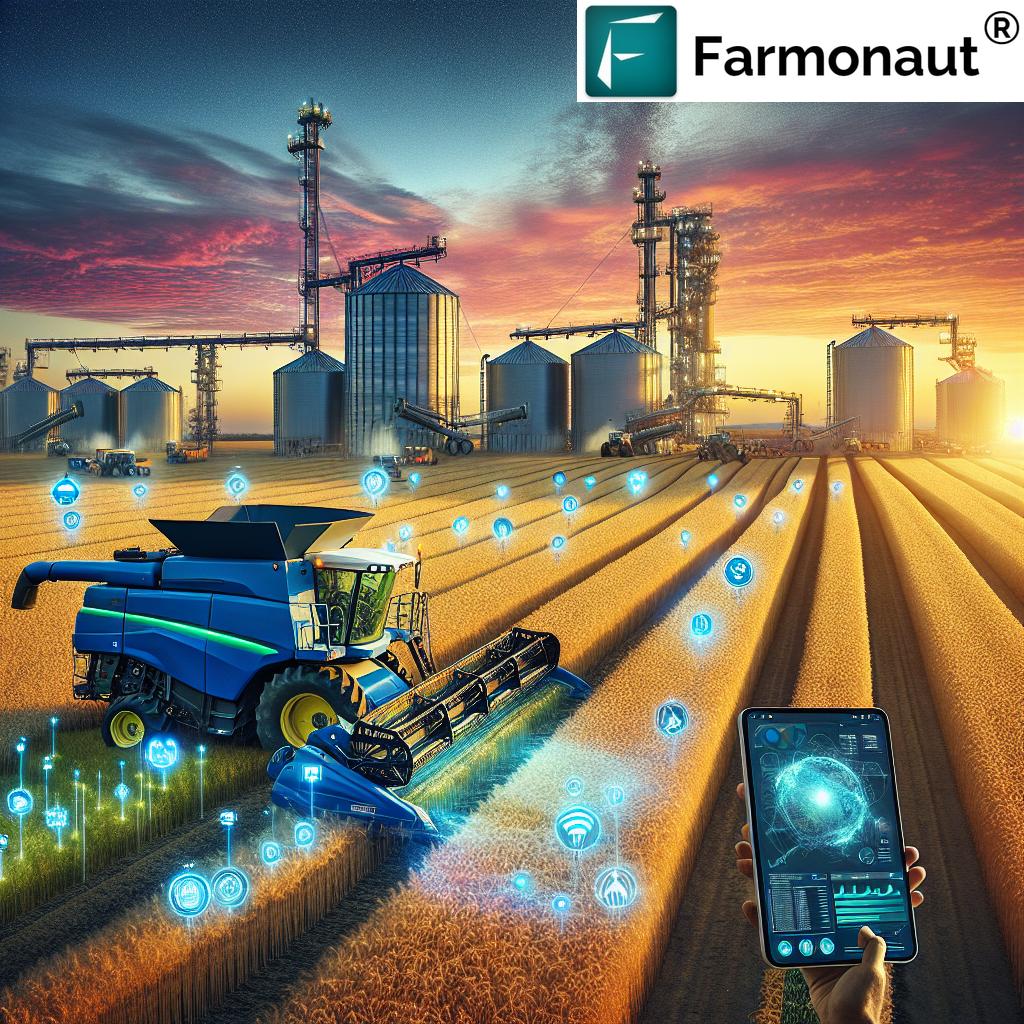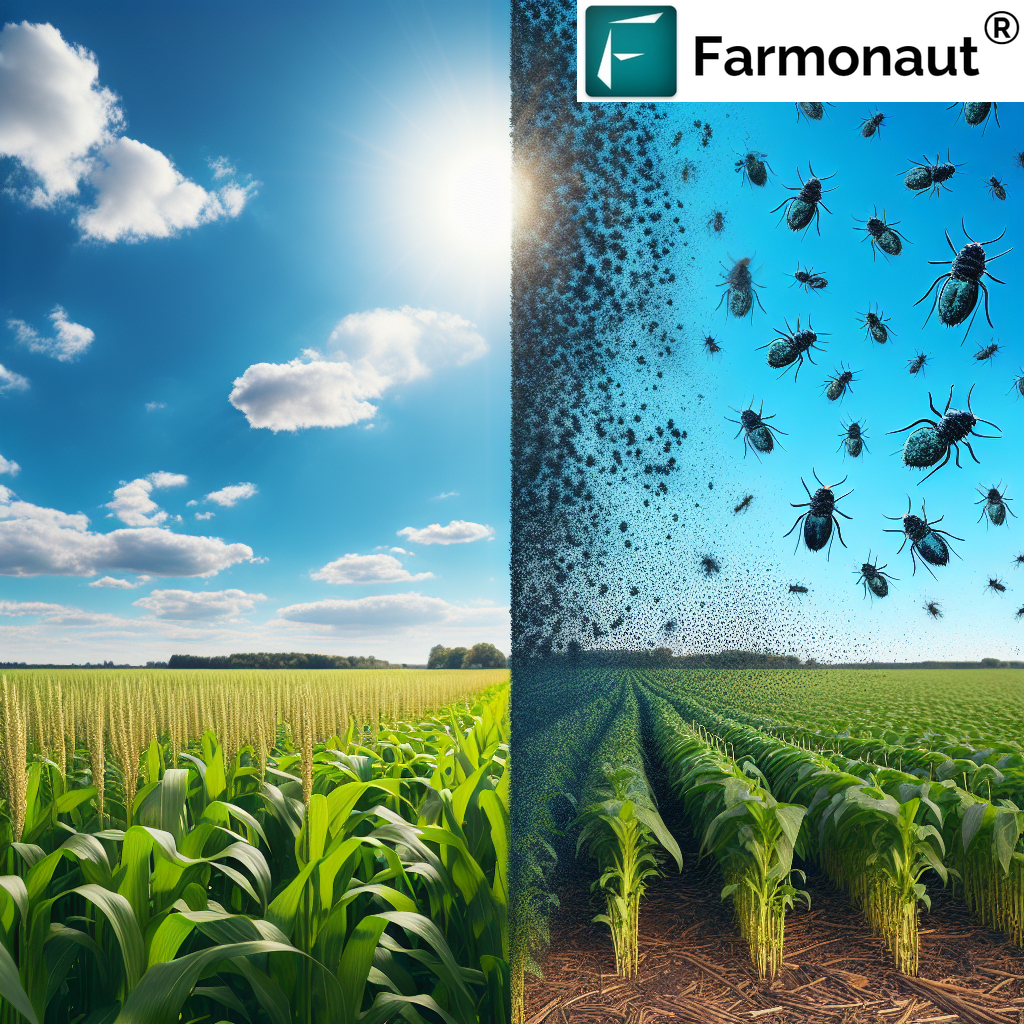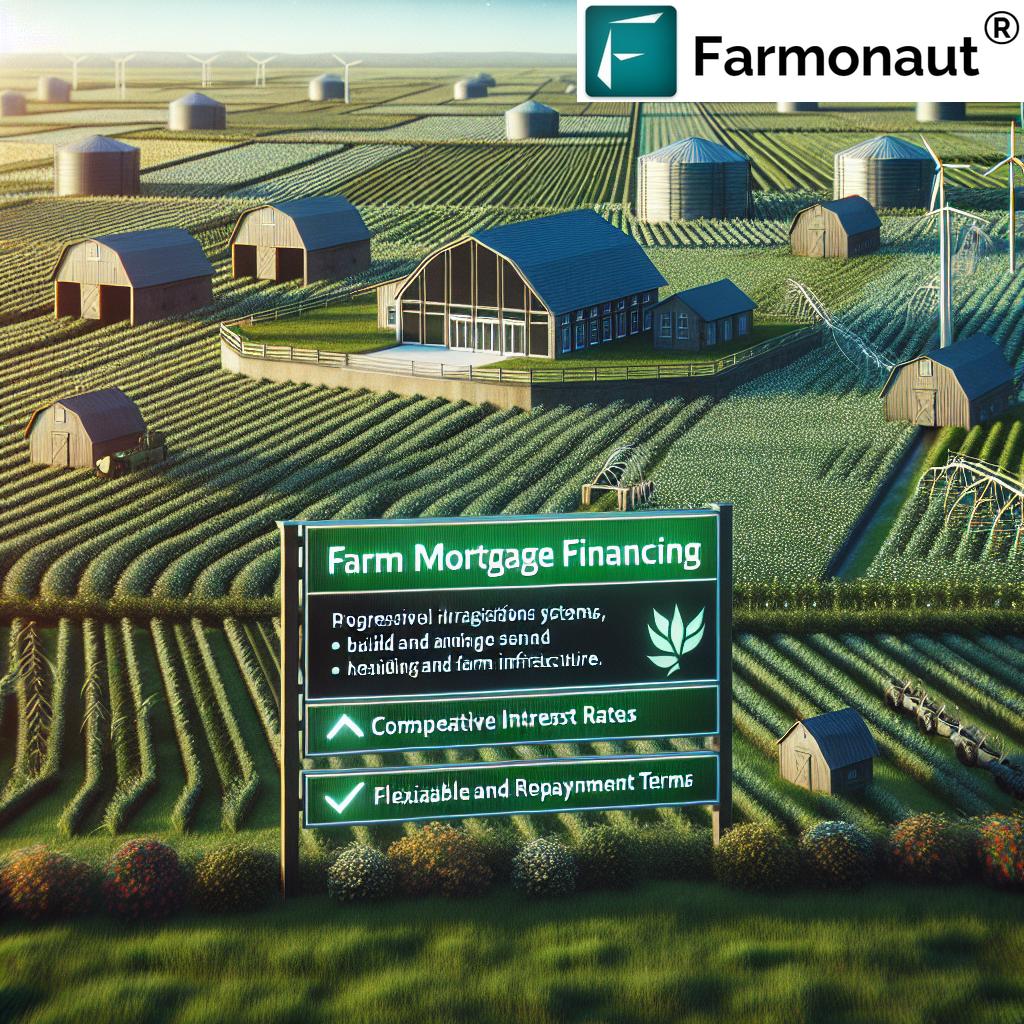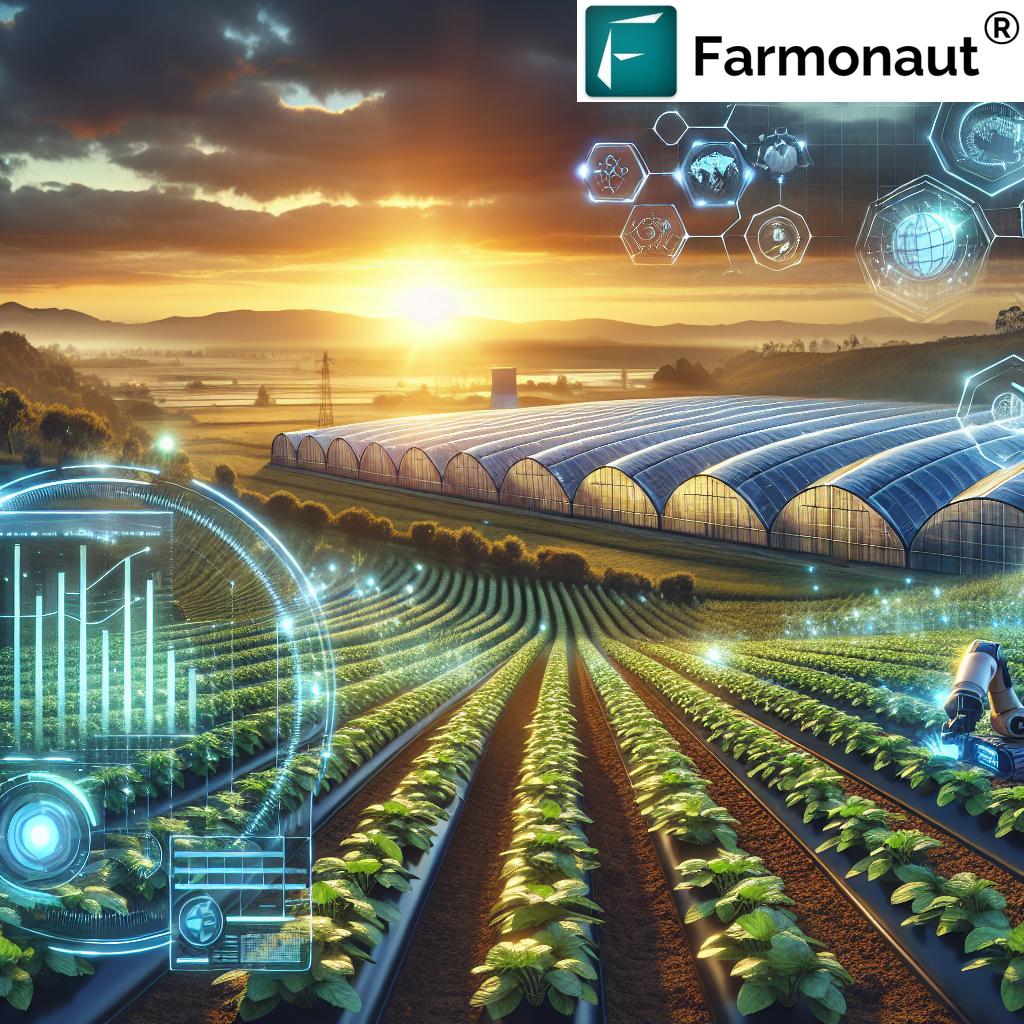Track Forestry Supply Chain With App: 7 Key Methods
“Over 70% of forestry companies now use mobile apps for real-time supply chain tracking and data management.”
Table of Contents
- Overview: Forestry Supply Chain Management in the Modern Era
- Understanding the Forestry Supply Chain
- Challenges Faced in Forestry Supply Chain Operations
- Role of Mobile Applications in Forestry Supply Chain Management
- 7 Key Methods to Track Forestry Supply Chain with Apps
- Comparison Table of Key Forestry Supply Chain Tracking Methods via Mobile Apps
- Benefits of Mobile Applications in Forestry Supply Chain Tracking
- Implementing Mobile Apps in Forestry Supply Chain: Best Practices
- About Farmonaut: Innovations in Supply Chain Transparency & Sustainability
- Frequently Asked Questions (FAQ)
- Conclusion
Overview: Forestry Supply Chain Management in the Modern Era
The forestry supply chain is at the crossroads of the global economy and responsible environmental stewardship. Encompassing critical activities like logging, timber processing, transportation, and forest management, forestry is essential for raw material supplies as well as sustainable development. However, increasing challenges linked to inefficiency, lack of transparency, and sustainability concerns threaten industry progress and public trust.
With the advance of technology and innovative solutions like mobile applications for forestry, new avenues have emerged to optimize supply chain management through real-time data collection, GPS tracking, geospatial monitoring, and integrated solutions. This blog dives deep into the transformative power of apps and tech—presenting 7 Key Methods to track forestry supply chain operations with precision, transparency, and sustainability.
Understanding the Forestry Supply Chain
To fully leverage mobile applications and advanced data management, let’s first understand the structure of the forestry supply chain. This ecosystem involves several stages that together deliver forest products from resource-rich landscapes to the hands of consumers and markets worldwide.
Key Stages of the Forestry Supply Chain:
- Harvesting: This stage involves felling trees, preparing logs for transport, and ensuring compliance with environmental regulations. It’s the initial and perhaps the most sensitive step for sustainable timber supply chain practices.
- Transportation: After harvesting, logs are moved from forest locations to processing facilities. Efficient tracking during this stage minimizes losses and helps in monitoring legal routes.
- Processing: Here, raw timber is converted into usable products such as lumber, paper, and biofuel. Accurate data collection ensures only legitimate, responsibly harvested timber is processed.
- Distribution: The final stage includes delivering finished products to markets or consumers. Traceability in distribution ensures the origin of all products can be verified.
At every step, opportunities arise to improve transparency, increase efficiency, and advance responsible sourcing using smart mobile and digital solutions.
Challenges Faced in Forestry Supply Chain Operations
- Inefficiencies: Many traditional forestry operations rely on manual tracking and outdated methods. This can lead to delays, increased costs, and even lost data.
- Lack of Transparency: The origin and journey of timber can be difficult to monitor, opening the door for illegal logging and unsustainable practices. Comprehensive forest product traceability is often lacking.
- Sustainability Issues: Ensuring responsible sourcing and compliance with environmental regulations is complex when data is inaccurate or fragmented.
- Regulatory Compliance: Government requirements for environmental compliance in forestry are strict and often require rigorous reporting.
- Data Management: Manual collection of information at each stage is error-prone, time-consuming, and susceptible to inaccuracies.
In this context, mobile applications and real-time data collection are reshaping how the forestry industry responds to these concerns and optimizes operations.
Looking for robust blockchain-based product traceability? Farmonaut’s platform offers secure, verifiable tracking of product origin and movement, fostering transparency and trust in all supply chains.
Role of Mobile Applications in Forestry Supply Chain Management
Recent advancements in technology—especially mobile apps—are catalyzing a revolution in forestry supply chain management. By integrating real-time tracking, geospatial monitoring, and seamless data collection, these apps combat inefficiencies and promote responsible, data-driven operations.
How Mobile Apps Transform the Forestry Supply Chain:
- Real-Time Forestry Data Collection: Field workers and managers use mobile devices to capture GPS coordinates, log timestamps, product details, and even images, all at the point of action.
- Forestry Inventory Tracking: Barcodes and QR codes make it easy to track the movement and status of logs and products through various facilities.
- Geospatial Tracking in Forestry: GPS and geo-fencing enable live monitoring of transportation routes, ensuring the legal transport of timber and compliance with protected area boundaries.
- Data Integration: Information collected in the field syncs with ERP systems and cloud databases, offering centralized management and powerful data analysis across the supply chain.
7 Key Methods to Track Forestry Supply Chain with Apps
Let’s dive into the seven most powerful methods mobile apps offer to enhance forestry supply chain management, each leveraging cutting-edge technologies to ensure unparalleled transparency, efficiency, and sustainability.
“Geospatial tracking technology has improved forestry supply chain transparency by up to 60% in the last five years.”
1. Real-Time GPS Tracking & Geospatial Monitoring
- Utilizes GPS-enabled mobile devices to track locations of forestry equipment, logging crews, and log movements throughout the supply chain.
- Geo-fencing solutions ensure operations are restricted to legal harvesting areas, improving compliance and sustainability.
- Benefits: Immediate insights into operations, reduction of illegal harvesting risk, higher efficiency in dispatch and route management.
2. Digital Barcode & QR Code Inventory Tracking
- Field staff use barcode scanners or QR code-enabled apps to tag and record each log or product.
- Logs and lumber are tracked throughout transportation, processing, and distribution stages.
- Benefits: Eliminates manual entry errors, ensures accurate inventory records, speeds up audits, and supports forest product traceability.
3. Satellite Imagery for Harvest Verification & Area Monitoring
- Apps leverage satellite-based data (such as multispectral imagery) to monitor forest health, detect illegal logging, and assess harvested areas.
- Helps verify compliance with regulatory frameworks and supports precision harvesting.
- Benefits: Remote verification reduces need for field inspections, increases detection accuracy for unsanctioned activities, drives sustainability benchmarks.
4. Blockchain-Based Forest Product Traceability
- Mobile apps collect and store immutable records of harvesting, transportation, and processing activities on a blockchain.
- Ensures that every movement is recorded, time-stamped, and tamperproof—ideal for proving sustainable sourcing and environmental compliance in forestry.
- Benefits: Delivers end-to-end traceability, safeguards against fraud, enhances consumer and stakeholder confidence.
5. Fleet and Resource Management
- Apps enable managers to track vehicles, equipment, and personnel using integrated logistics solutions.
- Examples include route optimization, scheduling, and live status updates on fleet activity.
- Benefits: Minimizes fuel costs, reduces carbon footprint, improves safety and scheduling adherence.
Explore Farmonaut’s fleet management solution for forestry and agri-businesses. Track resources in real time, optimize usage, and lower operational costs.
6. Automated Compliance and Reporting Tools
- Mobile apps help automate regulatory compliance by collecting required data at each stage, preparing reports, and even alerting managers about missing or incorrect entries.
- Integration with government regulations and standards such as FSC or PEFC is made seamless.
- Benefits: Reduces paperwork, ensures faster audits, and strengthens industry reputation.
7. Integration with Enterprise Resource Planning (ERP) Systems
- Mobile solutions synchronize field data with ERP platforms, providing a holistic supply chain view from harvesting and processing to distribution.
- Enables data-driven decisions for inventory management, resource allocation, and market forecasting.
- Benefits: Eliminates silos, improves cross-departmental collaboration, maximizes operational efficiency.
Comparison Table of Key Forestry Supply Chain Tracking Methods via Mobile Apps
| Method Name | Core Technology | Estimated Implementation Time | Estimated Accuracy (%) | Data Update Frequency | Impact on Transparency/Sustainability |
|---|---|---|---|---|---|
| Real-Time GPS Tracking & Geospatial Monitoring | GPS, Geospatial Analysis | 2-4 weeks | 95% | Real-time | High |
| Digital Barcode & QR Code Inventory Tracking | Barcode/QR, Scanning Apps | 1-2 weeks | 98% | Real-time | Medium |
| Satellite Imagery for Harvest Verification | Satellite Imagery, AI | 3-6 weeks | 95% | Daily/Weekly | High |
| Blockchain-Based Forest Product Traceability | Mobile Apps, Blockchain | 4-8 weeks | 99% | Real-time | High |
| Fleet and Resource Management | Telematics, GPS, Mobile Apps | 2-4 weeks | 90% | Real-time | Medium |
| Automated Compliance and Reporting Tools | Mobile Apps, Cloud Reporting | 1-3 weeks | 92% | Daily/On-event | Medium |
| ERP Integration for End-to-End Management | API, ERP Integration | 3-6 weeks | 95% | Real-time | High |
Benefits of Mobile Applications in Forestry Supply Chain Tracking
- Enhanced Efficiency: Automated data collection means less paperwork, faster communication between teams, and reduced errors.
- Improved Transparency: Live dashboards give all stakeholders—from forest managers to retail buyers—instant access to critical data, building trust and accountability.
- Regulatory Compliance: Automated logging of activities ensures easy auditing and complies with national and international forestry standards.
- Sustainability Promotion: Accurate, real-time monitoring supports responsible forestry practices and helps measure progress toward corporate and global sustainability goals.
- Reduced Environmental Impact: By optimizing resource allocation and fleet movement, apps contribute to lower fuel usage, less waste, and improved environmental compliance in forestry.
- Cost Reduction: Streamlining operations cuts inefficiencies, prevents pilferage, and decreases overheads associated with manual processes.
- Better Decision-Making: Advanced data analytics help managers spot trends, address issues proactively, and plan harvests or transport routes.
Interested in precision environmental compliance? Farmonaut’s carbon footprinting service offers real-time emission tracking, enabling forestry businesses to monitor, manage, and reduce their climate impact.
Implementing Mobile Apps in Forestry Supply Chain: Best Practices
While the benefits of mobile applications for forestry are clear, effective implementation requires a strategic approach. Maximize your ROI and long-term supply chain management capabilities by following these steps:
-
Assess Needs and Objectives:
Analyze operations to identify specific bottlenecks and set clear goals for efficiency, transparency, or sustainability improvements. -
Select the Right Technology:
Choose applications, devices, and systems matched to your organization’s scale, budget, and operational complexity. -
Invest in Training:
Ensure your teams are not only equipped with devices, but also fully trained on app features, data collection techniques, and best practices. -
Integrate for End-to-End Visibility:
Implement platforms that synchronize field data with your ERP and analytics tools, supporting powerful data-driven management. -
Continuously Monitor and Evaluate:
Use dashboards and regular reports to identify gaps, optimize workflows, and measure environmental compliance in forestry.
Need expert guidance or large-scale deployment? Check Farmonaut’s large-scale farm management app, designed for comprehensive control and smart analytics on forest and plantation assets.
For holistic crop, plantation & forest advisory—including remote monitoring, compliance, traceability, and resource optimization—our integrated suite delivers proven results across complex forestry landscapes.
Developers and large forestry operations: Access precision satellite and weather data directly with the Farmonaut API or view the API developer documentation for easy platform integration.
Secure financing and insurance seamlessly with satellite-based crop loan and insurance verification, streamlining documentation and reducing fraud risk in agriculture and forestry.
About Farmonaut: Innovations in Supply Chain Transparency & Sustainability
At Farmonaut, we harness the power of advanced, satellite-based technology to empower the agricultural and forestry industries in data-driven supply chain management, traceability, and sustainability.
- Satellite Crop Health Monitoring: Our platform delivers near real-time insights on vegetation health, soil moisture, and pest risk—guiding smarter resource allocation and increasing efficiency from forest to market.
- AI-Based Advisory: Our Jeevn AI system offers field-specific recommendations and real-time weather analytics, boosting productivity and minimizing losses.
- Blockchain Traceability: With blockchain-enabled supply chain solutions, we provide trust and verifiable proof of responsible forestry practices at every link in your chain.
- Fleet, Resource & Carbon Management: We offer fleet tracking and carbon footprinting tools that simplify compliance and environmental reporting while lowering operational costs.
- Comprehensive Accessibility: Available via mobile (Android, iOS), web, and direct API routes for seamless integration into existing enterprise systems.
Our commitment: democratize precision technology for organizations of all sizes, offering affordable forest management solutions that meet real-world challenges and international standards.
Frequently Asked Questions (FAQ)
What is forestry supply chain management?
Forestry supply chain management is the process of overseeing and optimizing all stages—from harvesting trees through transportation, processing, and final product distribution—to ensure efficiency, transparency, sustainability, and compliance in getting forest products from source to market.
How do mobile applications improve forestry supply chain operations?
Mobile applications digitize the tracking, monitoring, and logging of every supply chain stage—from GPS location of logs to real-time inventory updates and compliance reporting. This digitization reduces manual errors, boosts transparency, and enables sustainable practices.
What is geospatial tracking in forestry?
Geospatial tracking uses GPS and mapping technologies within mobile apps to monitor the movement and location of timber, logging equipment, and transport fleets. It enables live route monitoring, ensures legal compliance, and provides valuable data for analytics and sustainability.
Can these tracking solutions help in preventing illegal logging?
Yes; real-time GPS tracking, geo-fencing, and blockchain-based traceability make it significantly harder for illegal logging and transportation to go undetected, increasing compliance with forest protection laws.
What’s the role of blockchain in forestry and timber supply chain?
Blockchain records every step in the chain—from harvest to end user—in a tamper-proof, time-stamped ledger. This ensures authenticity, supports sustainability certifications, and builds trust among buyers and regulators.
How does satellite imagery contribute to forestry management?
Satellite imagery allows remote monitoring of large forest tracts. It helps detect illegal activity, verify harvest locations, and monitor forest health—supporting data-driven, sustainable management.
How do I integrate these solutions in my existing forestry operation?
Begin by assessing operational needs, selecting mobile apps compatible with your processes, investing in user training, integrating with current ERP platforms, and continuously monitoring results for optimization.
Conclusion: The Future of Forestry Supply Chain Tracking is Mobile, Transparent, and Sustainable
The modernization of the forestry industry depends on the successful adoption of mobile applications, real-time data collection, and geospatial tracking across every link in the supply chain. By implementing the seven key methods detailed in this guide—from GPS monitoring and automated inventory through to blockchain-based traceability and ERP integration—organizations can not only optimize operations and reduce costs but also meet pressing transparency and sustainability requirements.
As we look to the future, leveraging technological innovation will remain integral for responsible, competitive, and trustworthy forest management solutions. For those ready to take action, now is the moment to connect your teams and assets with the digital tools shaping tomorrow’s sustainable timber supply chain.



